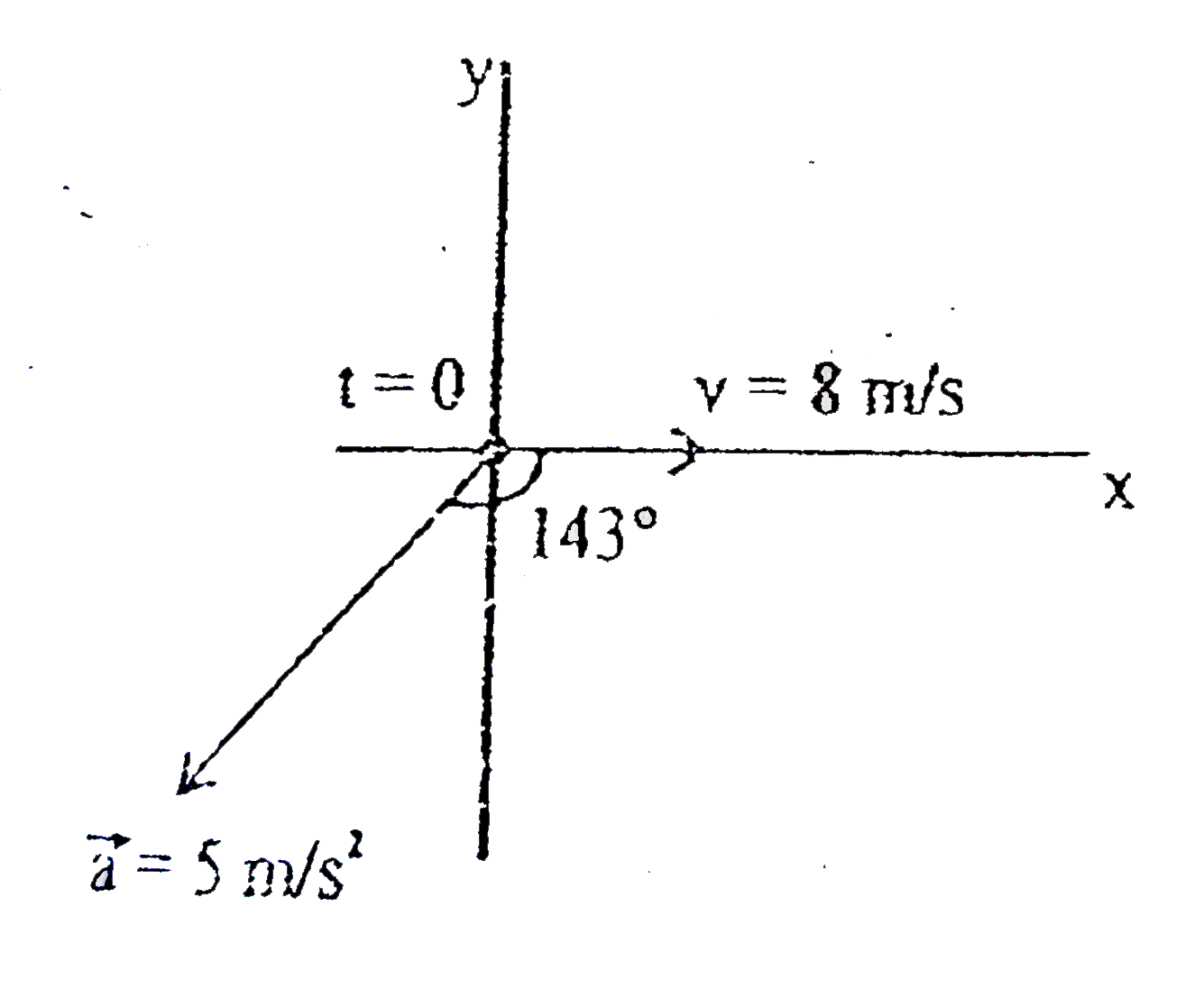An object is moving in the x-y plane with the position as a function of time given by →r=x(t)ˆi+y(t)ˆj. Point O is at x=0,y=0 . The object is definitely moving towards O when
vx>0,vy>0
vx<0,vy<0
xvx+yvy<0
xvx+yvy>0
The correct Answer is:C
c. →r=xˆi+yˆj
→v=d→rdt=dxdtˆi+dydtˆj=vxˆi+yyˆj
If →r and →v are in opposite directions, then definitely the
particle will be moving towards origin O, for this →r⋅→v<0
⇒xvx+yvy<0 .
Topper's Solved these Questions
- MISCELLANEOUS KINEMATICSBOOK - CENGAGE PHYSICSCHAPTER - MISCELLANEOUS KINEMATICSEXERCISE - Multiple Correct Answer Type
26 Videos
- MISCELLANEOUS KINEMATICSBOOK - CENGAGE PHYSICSCHAPTER - MISCELLANEOUS KINEMATICSEXERCISE - Linked Comprehension Type
35 Videos
- LINEAR AND ANGULAR SIMPLE HARMONIC MOTIONBOOK - CENGAGE PHYSICSCHAPTER - LINEAR AND ANGULAR SIMPLE HARMONIC MOTIONEXERCISE - Multiple Correct Answer Type
9 Videos
- MISCELLANEOUS VOLUME 2BOOK - CENGAGE PHYSICSCHAPTER - MISCELLANEOUS VOLUME 2EXERCISE - INTEGER_TYPE
10 Videos
Similar Questions
An object moves in such a way that its position (in meters) as a function of time (in seconds) is →r=ˆi+3t2ˆj+tˆk. Give expressions for (a) the velocity of the object and (b) the acceleration of the object as functions of time.
View SolutionObtain the formulae for the position of an object moving with uniform velcity v at any time t in terms of its position at t = 0
View Solution
Knowledge Check
An object is moving along the xaxis with postion as a function of time given by x=x(t). Point O is at x=0. Object is definitely moving towardr O when
Adx/dt<0Bdx/dt>0Cdx2/dt2<0Ddx2/dt2>0The position of a particle moving in x-y plane changes with time t given by →x=3t2ˆi+9tˆj. The acceleration of particle would be
A2 m/s^2B3 m/s^2C4 m/s^2D6 m/s^2A particle moves in x-y plane. The position vector of particle at any time t is →r={(2t)ˆi+(2t2)ˆj} m. The rate of change of θ at time t = 2 s (where θ is the angle which its velocity vector makes with positive x-axis) is
A217rad s−1B114rad s−1C47rad s−1D65rad s−1
If x and y co-ordinates of a particle moving in xy plane at some instant of time are x=t2 and y=3t2
View SolutionAn object is moving in x−y plane its velocity and acceleration at t=0 are represented in figure.

After how much time object crosses the y−axis:-
View SolutionA particle moves in xy-plane. The position vector of particle at any time is →r={(2t)ˆi+(2t2)ˆj}m. The rate of change of θ at time t=2 second. ( where 0 is the angle which its velocity vector makes with positive x-axis) is :
View SolutionAn object moves from position (6,8) to (12,10) in the x-y plane. Magnitude and direction of displacement is
View SolutionA particle moves in the x-y plane with velocity vx=8t−2andvy=2. If it passes through the point x=14andy=4att=2s, the equation of the path is
View Solution
